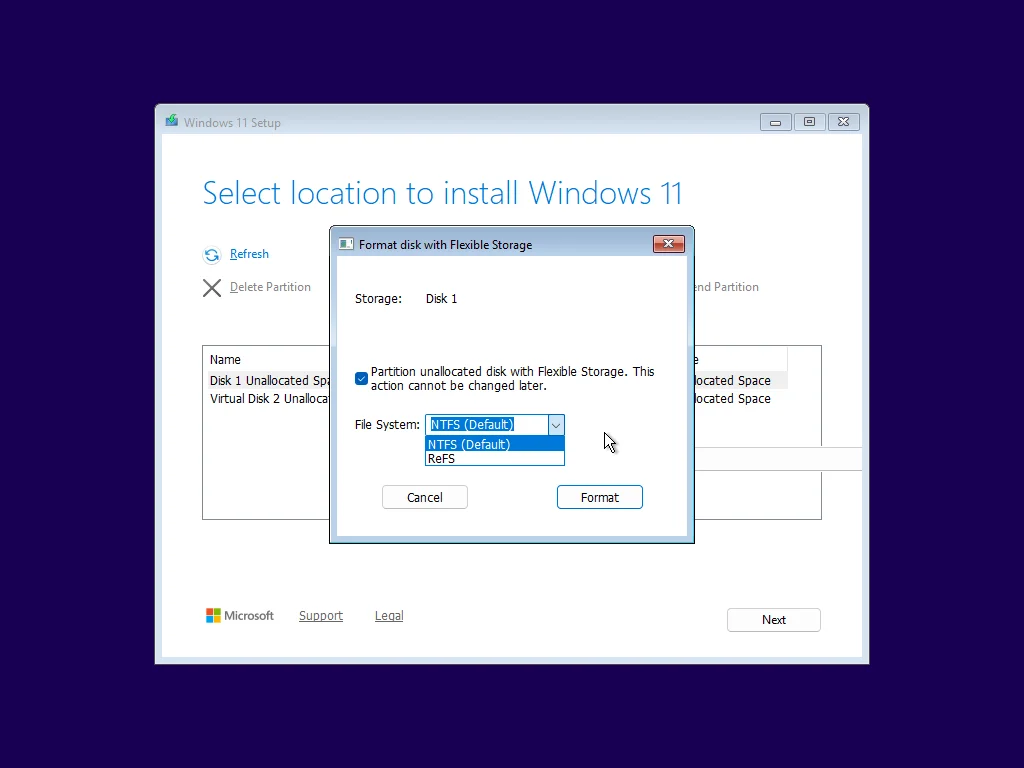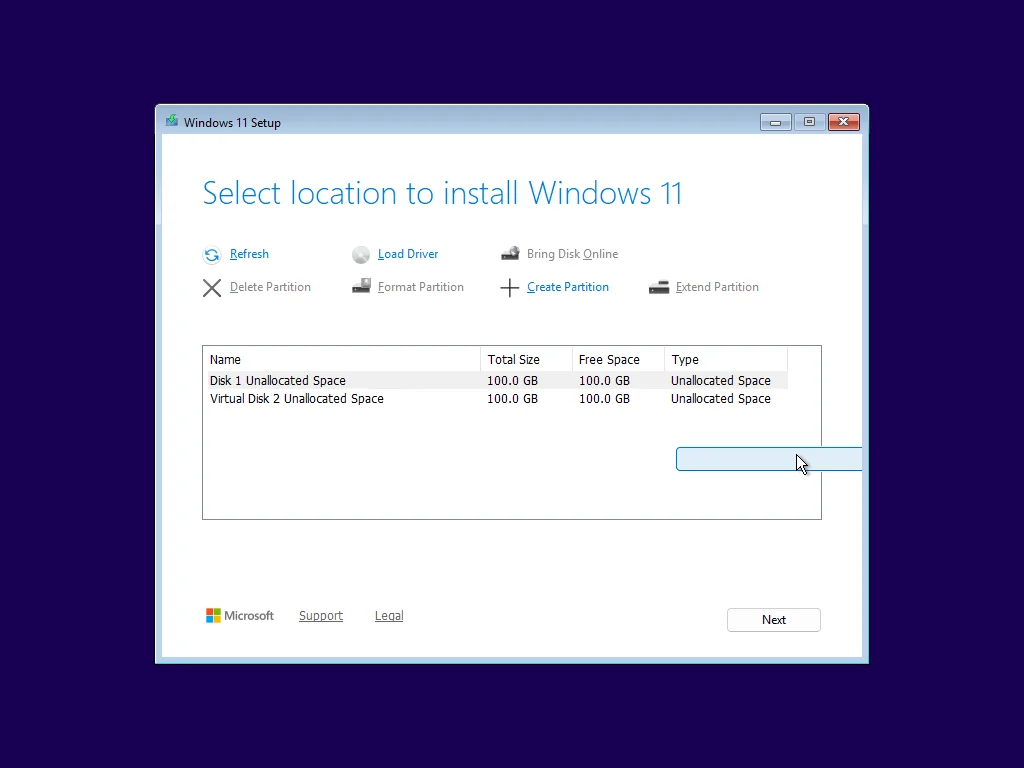Ah bah that’s it, Microsoft has finally decided to bury this good old NTFS after 30 years of good and loyal service!
Indeed, they have just integrated refs into the latest insider versions and you will see it is quite balèze as a file system since it can, among other things, of up to 35 data petacts (or 35 million GB), or enough to store all the seasons of Stranger Things in 8K, including those which they have not yet turned ^^.
If you are a Power User, a developer or like me, a tech enthusiast who regularly handles large volumes of data, this novelty may well change your way of storing and managing your files.
But before I explain all the details of refs, you still have to remember that NTFS appeared in 1993 at a time when the top of the top was Windows 3.1! And at the time, I don’t know if you remember but the biggest hard drives could contain max a few hundred MO. But we were happy anyway! So when the user Phantomofearth discovered in the latest INSIDER version of Windows 11 (the build 27823), which refs (Resilient File System) was available for all and no more only for Windows Servers everyone jumped for joy.
So, if you choose to format your hard drive with when installing Windows, you will have the choice between NTFS (by default) and refs. Well, it’s still in beta but it works.
So why is it’s cool?
Well as I told you in intro, refs supports volumes up to 35 petacts (35,000 TB), against 256 TB for the NTFS but above all, it uses “integrity streams” with checksums to detect data corruption. In French, that means that he can self-refer to and unlike our women and politicians, he is able to resist corruption. No more files that disappear without leaving a trace after a mysterious BSOD!
Thus, when used with Storage Spaces (Microsoft storage technology which allows you to group several discs), it can automatically repair the corruption detected using an alternative data copy. The system even incorporates a “scrubber” which periodically analyzes your data in the background to detect and repair the problems even before you noticed it.
In terms of performance, it’s also great because thanks to Block cloning (Cloning blocks) of refs which considerably accelerates the copy operations, we can embark on merger operations on .VHDX files of virtual machines without slowing down the perfs.
Or create “zero” files just as quickly thanks to the functionality of Sparse VDL (Valid Data Length). This reduces the time necessary to create fixed VHDs (virtual hard drives) from several minutes to a few seconds.
The functionality of Mirror-Accelerated Parity Also makes it possible to optimize in real time access to data by placing those which are frequently accessed on rapid media (such as SSDs) and cold data on slower media but having more capacity. Windows could automatically store your most used files on your ultra-fast SSD and the archives rarely consulted on your big hard drive.
As you can see, refs has been specifically optimized for Windows virtualization and that’s cool, but everything is not rosy in the kingdom of refs. There are still several important limitations, which is why Microsoft has not yet deployed it as a default file system.
First of all, you can’t boot on it. It’s not nothing and this explains that. Then there is no support for the removable media yet. You will not be able to format your good old USB key in refs.
And then there are a lot of things about NTFS:
- No file compression at the system level
- No integrated encryption (like Bitlocker)
- No disc quotas
- No support for extended attributes
- No support for short names (format 8.3)
- No support for object ID
- No support for ODX (Offloaded Data Transfer)
We will see if they implement it all in the future. In short, the discs Refs is not yet perfect and above all, older operating systems will not be able to read these kinds of volumes, which poses compatibility problems when sharing discs or dual-boot use.
But while waiting for refs to obtain all the features of NTFS, here are the scenarios where it could already be useful to you:
- Power users with huge data collections : If you manage massive collections of high -resolution photos, 4K/8K videos, or other voluminous data sets, REFS offers scalability and security of higher data. The capacity of 35 “offers you a practically unlimited growth margin.
- Intensive virtualization environments : If you run several virtual machines, refs can significantly accelerate operations on .VHDX files. The tests show that certain operations which take several minutes with NTFS are reduced to a few seconds with refs.
- Backup solutions : Refs is ideal as a backup target, offering better data integrity and a detection/corruption detection capacity. If you are using tools like Veeam Backup, refs volumes can offer better performance and better reliability.
- Creative workers : Video editors, photographers and other content creators regularly handling large files could benefit from the protection of data protection and improved performance.
- And development environments : Developers working with large code bases, docker containers and heavy testing environments could take advantage of increased performance and stability.
So even if refs is not yet ideal as a main system, it can be excellent as a secondary system for specific data volumes, for example a disc dedicated to the storage of your creative projects or your virtual machines.
In any case, seeing it happens in real life in Windows, it shows that Microsoft would like to make it the default system in the years to come. It will be done slowly, gradually, but it will be done and above all it reduces the difference between server solutions with the need to have certified gear and those intended for consumers.
Besides with AI, virtual reality and ultra-high definition content, disk space needs explode. And new storage techno such as PCIe 5.0 SSDs, phase changes and other innovations require more advanced file systems to fully exploit their capacities. All this, Microsoft knows this very well so if they want Windows to stay in the race, they are forced to get started.
Then, I admit that having a system capable of self-repairing your data or resisting any form of data corruption, it would not be to displease me. Who has never lost working hours because of a corrupt file after an update or a mysterious crash?
In short, no need to rush on Refs right away, especially that you can’t boot on it, but now you know that it is soon so start to think about how you could use this techno if you have a job or a time that requires the handling of large volumes of data.
Source link
Subscribe to our email newsletter to get the latest posts delivered right to your email.





Comments